- Paula Price
- Professor and Associate Dean for Diversity and International Engagement
- Culturally Responsive Indigenous Science: Connecting Land, Language, and Culture
- https://cris.libraries.wsu.edu
- Washington State University
- CarlaDean Caldera
- Northern Paiute Cultural Advocate / WSU Liaison
- Culturally Responsive Indigenous Science: Connecting Land, Language, and Culture
- https://cris.libraries.wsu.edu
- Confederated Tribes of Warm Springs, Washington State University
- Landon Charlo
- PhD Student
- Culturally Responsive Indigenous Science: Connecting Land, Language, and Culture
- https://cris.libraries.wsu.edu
- Washington State University
- Kellie Fry
- K-8 Elementary Teacher
- Culturally Responsive Indigenous Science: Connecting Land, Language, and Culture
- https://cris.libraries.wsu.edu
- Washington State University, Nespelem Elementary School, Colville Confederated Tribes
- Zoe Higheagle Strong
- https://education.wsu.edu/zoe-strong/
- Assistant Professor | Director, Center for Native American Research and Collaboration
- Culturally Responsive Indigenous Science: Connecting Land, Language, and Culture
- https://cris.libraries.wsu.edu
- Washington State University
- Sandra Larios
- Research Assistant
- Culturally Responsive Indigenous Science: Connecting Land, Language, and Culture
- https://cris.libraries.wsu.edu
- Washington State University
- James LaSarte-Whistocken
- Coeur d’Alene Language Instructor
- Culturally Responsive Indigenous Science: Connecting Land, Language, and Culture
- https://cris.libraries.wsu.edu
- Lotus Norton-Wisla
- Digital and Community Outreach Archivist
- Culturally Responsive Indigenous Science: Connecting Land, Language, and Culture
- https://cris.libraries.wsu.edu
- Washington State University
- T Watson
- Clinical Assistant Professor
- Culturally Responsive Indigenous Science: Connecting Land, Language, and Culture
- https://cris.libraries.wsu.edu
- Washington State University
Presenters’
Choice
Choice
Public Discussion
Continue the discussion of this presentation on the Multiplex. Go to Multiplex









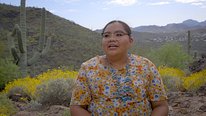
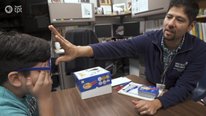
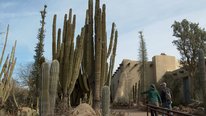
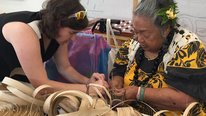
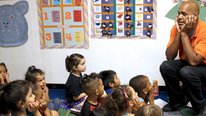
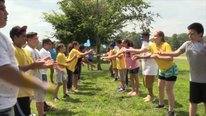
Francene Watson
Clinical Assistant Professor
On behalf of our entire team, welcome to our page; we are glad you are here. In its first cycle of NSF-funding, the Culturally Responsive Indigenous Science (CRIS) project stems from decades of relationship building, in part facilitating culturally responsive youth development projects with our partners. This week, we have our larger team co-presenting to field your questions. Together, our team represents language and culture teachers from the Schitsu’umsh (Coeur d’Alene) Tribe, Confederated Tribes of Warm Springs, and Confederated Tribes of the Colville Reservation, as well as faculty and graduate students from the University’s College of Education and Center for Digital Scholarship and Curation.
As we begin our implementation phase, we continue to reflect on the importance of family and community engagement, both foundational to enlivened and enriched curriculum. The need for this component of the project has been made increasingly vivid in current times. The emerging curriculum seeks to weave knowledge systems and inspire multiple ways of understanding the world. In this way, this project not only benefits our participating students, but all students. We welcome all questions, feedback and resources and have particular interest in the below questions. Thank you for visiting.
Scott Bellman
Alex DeCiccio
Karletta Chief
Marilu Lopez Fretts
Janelle Johnson
Kellie Fry
David Andrews
Francine,
This project is an important as well as exciting. I believe it has the potential to encourage more indigenous citizens to contribute to the STEM world and realize their true potential as leaders and researchers. Excellent job!
Karletta Chief
James Vonesh
Thank you for sharing, I really enjoyed learning about your project. I am curious about how successful you have been with connecting STEM research and researchers at WSU to this project? I am curious about the overlap and or differences in perspective between STEM researchers and Indigenous Science. Are you getting a lot of interest from your biology and environmental studies faculty? To what extent are the ideas of Indigenous Science new to them versus something they are already on board with?
Alex DeCiccio
Kellie Fry
Paula Price
Professor and Associate Dean for Diversity and International Engagement
Thank you for you interest in our project and your question! Because our project is very focussed on Indigenous Science Curriculum Development and honoring culture and language at the center of all that we do, we are especially careful about inviting STEM researchers from the university into our project. We work with folks in the sciences who are Indigenous, or have a keen interest in learning and understanding Indigenous Knowledge Systems.
Alex DeCiccio
Paul Bergeron
Marilu Lopez Fretts
Kellie Fry
Lynda McGilvary
Communications Director
This seems like a lovely project. Under which NSF program is it placed? Could you elaborate on your research question(s) and/or project goals?
Michael I. Swart
Kellie Fry
Francene Watson
Clinical Assistant Professor
Greetings, Lynda. Thanks for visiting and taking time. This project is under the Discovery Research PreK-12 program (DRK-12). Our main questions are (a) What are the impacts of culturally responsive and land education-based ISTEM curriculum and technology on Native American student engagement, efficacy and achievement in school? (b) What types of professional development activities foster teacher efficacy and improve teacher learning and teaching of ISTEM in classrooms? and (c) How can ISTEM foster greater family and community engagement in schools and in Tribal Communities?
We are lucky to work with such an amazing team of teachers and community--we are learning so much through the project process especially grounded in relationship building. As we move through the development of the curriculum and PD, one aspect of those questions we might add on (as noted above in our subquestions) is reflecting how living in a rural area changes how the work happens, especially with sustainability in mind--definitely a part of our learning right now. Again, thankful for our team and continued creative commitment! Thanks again for your post.
Alex DeCiccio
Michael I. Swart
Meena Balgopal
Gina Greenidge
Kellie Fry
Lindsey Mohan
This work is really exciting! I'm wondering if you can describe your design process for producing curriculum in partnership with tribal educators? Do you produce materials that can be used nation-wide or are these specific to certain tribal communities?
Kellie Fry
CarlaDean Caldera
Northern Paiute Cultural Advocate / WSU Liaison
Thank you for your time.This is the design process we utilized in the Confederated Tribes of Warm Springs, Oregon community. The design process involved interviewing our community tribal Elders, cultural leaders, & community members. We have a curriculum team including local school teachers & cultural staff who format the information into lesson modules. We utilize the 7E format of curriculum development; Engage, Explore, Environment, Explain, Elaborate & Evaluate. There are three states involved with project. The material is specific to each of our regions. As for producing materials nation-wide...that is a great question! I do not have an answer to that...yet.
Marilu Lopez Fretts
Kellie Fry
Francene Watson
James LaSarte-Whistocken
Coeur d’Alene Language Instructor
Good afternoon Lindsey just to chime in as one of the three tribes partnered with this project the Coeur d'Alene Tribe team consists of a couple teacher from our tribal school and our Coeur d'Alene Tribe Language Dept. As a project whole we've decided to tackle the same ideas on building curriculum through the 7E format like CarlaDean said even though each Tribe has different ways of doing those said ideas and also similarities. Working with WSU and our team some how those lessons come out very well. When I was brought on to the project the fact that it is built for us to use in our local area, it was laid out that this would be sort of a guideline that other tribe could use and maybe one day this curriculum would be used to educate the world on the three Tribes involved.
Kellie Fry
Francene Watson
Margo Murphy
Science Instructor
Nice work! I see in the video summer experience for students and building curricular materials are happening. Is there teacher PD support? if so, what does that look like?
Kellie Fry
Zoe Higheagle Strong
Assistant Professor | Director, Center for Native American Research and Collaboration
Hello Margo, Thanks for viewing! Yes, we have an extensive teacher PD aspect of this project. At the beginning of the grant, we hosted a retreat and focused on building relationships between grant team, culture and language specialist/teachers, and school science teachers, and together deconstructing "science." Too often, science is mostly viewed from a western perspective and privileged over Indigenous science. Our goal was to shift from this view to allow Indigenous science and knowledge systems to lead our project and curriculum development. We defined cultural values that helped framed work. After, our wonderful project directer Dr. Francine Watson, had regular ZOOM meetings (at times weekly, or monthly based on need) to develop curriculum and discuss these topics. I believe what was most powerful was the time that school teachers had with the cultural and language specialist. We also had teacher retreats during the summer, and rotated a retreat at each tribal community. Take care, Zoe Higheagle Strong
Alex DeCiccio
Kellie Fry
Kimberly Welty
Thanks Sandra for pointing us to your view - I thoroughly enjoyed watching it and learning more about your research!
Kellie Fry
Francene Watson
Zoe Higheagle Strong
Assistant Professor | Director, Center for Native American Research and Collaboration
Thanks for watching our video!
Kellie Fry
Kate Meredith
Very interesting work across broad topic areas. What role did the summer camps play in your project? How were they designed?
Kellie Fry
Kellie Fry
K-8 Elementary Teacher
Hi Kate! Our summer camps are a way to bring together students from all three tribal communities to meet and learn from each other. In our app, we have the option for our students to collaborate with each other through discussion boards. This past summer, our students spent a week on the WSU campus and collaborated together on a variety of science and cultural activities including testing water from each community (mentioned in the video), preparing and serving traditional foods, and team building exercises.
Paula Price
Professor and Associate Dean for Diversity and International Engagement
Hi Kate,
The summer camp is an important component of the project, as it brings students to the University campus, where we spend time working on team building, leadership skills, Indigenous knowledge, and hands on work in the labs. Our aim is to familiarize students to University life--staying in a dormitory, engaging in seminars and labs, and also working on communication and leadership skills through a Challenge Course. The camp is designed based on about 15 years of prior summer camps that were created in collaboration with the Coeur d'Alene Tribe. The camp for this project is also designed to bring multiple communities together in addition to engagement in Indigenous Science.
Isabelle Herde
What a great and important project! In the video you mention consulting Elders to determine topic areas for the curriculum. How involved are Elders in the project?
Kellie Fry
Kellie Fry
K-8 Elementary Teacher
Hi Isabelle, thanks so much for your question! In our culture, our elders are our knowledge holders; through assimilation, a majority of our cultural knowledge and values has been lost. The elders who contribute to our project share with us valuable information that we can include in our lesson modules to pass on to future generations. Each of the three tribal communities works closely with the elders to include their knowledge and to ensure we are following protocol of which information can be shared outside of the tribe.
Janelle Johnson
Paula Price
Professor and Associate Dean for Diversity and International Engagement
Hello Isabelle,
Elders were also very important to help us develop Cultural Standards used for the lesson plans. These Cultural Standards were sometimes based in their language words and not in English, and serve as an important way that we connect language and culture with the science lessons.
Alex DeCiccio
Janelle Johnson
Janelle Johnson
So important to center the knowledge of the elders...what a wonderfully designed and thoughtful project. Congratulations to the whole team.
Andrew Coppens
What a fantastic video and project, thank you for this work. Two aspects stand out to me especially, among many. First, in the video Zoe Higheagle Strong mentions that engagement with indigenous ways of knowing is beneficial for all students, not just for those with indigenous backgrounds. This is such a crucial point for educators to understand. Second, the video speaks to culture as both past and future / tradition and innovation, not least of which embodied in collaborative relations between adults and children. Again, thank you!
Alex DeCiccio
Barbara Rogoff
Paula Price
Gina Greenidge
Kellie Fry
Zoe Higheagle Strong
Assistant Professor | Director, Center for Native American Research and Collaboration
Andrew, thank you for taking the time to watch our video. And, I really appreciate you acknowledging that Indigenous knowledge systems can benefit all students. I realize educators' burden of culturally responsive teaching when classrooms/schools are ethnically and culturally diverse, thus it is helpful to incorporate pedagogy that can engage all students and garner respect for other ways of knowing. Enjoy your day, Zoe
Kellie Fry
Barbara Rogoff
Hi Presenters, What a great video! Like Andrew said, Indigenous Knowledge Systems offer wisdom not only for Native communities, but worldwide, for all. In our research, we are trying to understand Indigenous ways of learning. As Dr. Francisco Rosado May, Mayan professor, has written, Indigenous ways of learning are important for the next generation to learn and also to innovate, adding to knowledge for the benefit of the community. Including Indigenous ways of learning in educational settings appears to be broadly beneficial, not just for Native kids but for kids in general.
Alex DeCiccio
CarlaDean Caldera
Northern Paiute Cultural Advocate / WSU Liaison
Hi Barbara, thank you for viewing our video. Yes, inclusion is a wonderful way of learning for all! Your work is so very inspiring. Continue on, CarlaDean
Alex DeCiccio
Eileen Merrit
Your project is inspirational. I love how you are asking the elders what they want the youth to know. I appreciate how you are drawing students' attention to water quality issues, and giving them the skills needed to advocate for their communities.
CarlaDean Caldera
Marilu Lopez Fretts
Paula Price
Kellie Fry
Francene Watson
Landon Charlo
PhD Student
Hello Eileen, thank you for the inspiring comment. I am a graduate student on the project and a Tribal member from Montana. One of the aspects I enjoy the most in this project is getting to work with Tribal Elders and Language teachers. Elders have a wealth of knowledge that may soon disappear and this project is helping to keep the Indigenous ways of knowing alive through the next generation. Another element of the project that is vitally important is exposing the Tribal youth to technology that connects them to the Land. Making connections to the Land and Language are essential as that is what connects us to the past, present and future. Thank you, Landon.
Kellie Fry
Zoe Higheagle Strong
Assistant Professor | Director, Center for Native American Research and Collaboration
Eileen, thanks so much for your time in viewing our work and encouraging words. Take care, Zoe
Kellie Fry
CarlaDean Caldera
Northern Paiute Cultural Advocate / WSU Liaison
Hi Eileen, I am blessed to be involved with this project, cultural bridges are being build between our youth, our Elders, school & communities... Thank you for viewing our video! CarlaDean
Karletta Chief
This work is so inspiring! I like how you incorporated language and culture into the Indigenous perspective of water is life. Why tribes do you work with? How do you ensure respectful integration of culture and language? Is it overseen by Tribal IRB?
Kellie Fry
Landon Charlo
PhD Student
Hello Karletta, thank you for the post, I am a graduate student on the project. We work with the the Schitsu’umsh (Coeur d’Alene) Tribe of Idaho, Confederated Tribes of Warm Springs (Oregon), and Confederated Tribes of the Colville Reservation (Washington). We ensure respectful and accurate integration by positioning ourselves as facilitators of curriculum building. The curriculum is primarily built by the language teachers, science teachers, Elders and other Tribal knowledge experts from the community and from very beginning. This way the integration of Western science and Tribal knowledge is agreed upon by the community who lead in its development, and what is taught is what the community deems as important. We at the University are primarily position ourselves as organizers of workshops, field trips, zoom meetings etc.. As far as Tribal IRB I'm not 100% sure perhaps another member from our group can answer that for you. I do know we do go through several protocols to seek approval of as many Tribal guidelines as possible. Thank you.
Karletta Chief
Kellie Fry
CarlaDean Caldera
Northern Paiute Cultural Advocate / WSU Liaison
Hi Karletta, Your interest is appreciated. I can elaborate on how our team from Confederated Tribes of Warm Springs, Oregon are creating some of the curriculum. We started by talking with the Elders of the three tribes included in their confederation: the Warm Springs Ichishkiin speaking, the Wasco: Kiksht speaking & the Northern Paiute: Numu yadoa speaking. We invited Elders to 1 hour round table discussions, weekly for 3 months, on what culturally important information do we want our youth to know & retain. Overall, the Elders wanted the youth to know the importance of water in our past, present & future. We collaborate with science, math & tech teachers from our Warm Springs K8 Academy, staff of the Confederated Tribes Culture & Heritage Department, Washington State University staff and students & the two other tribal communities; the Confederated tribes of Colville, Wa & the Coeur d'Alene tribe of Idaho. All of our curriculum building is ongoing and must be approved through our Elders, the CTWS Culture & Heritage Commitee, the Confederated Tribes of Warm Springs, Oregon tribal council. As the curriculum is being developed, we continue to reach out to our local environmental resources. Thank you for viewing our project!
Kellie Fry
Karletta Chief
Thank you for sharing with me how you developed this curriculum. This type of project building is great! I am a guest speaker in a decolonized STEM teaching course where educations students aim to do this.
Cara Shopa
Wow, what an amazing project. Thank you for sharing the Plateau People's Web Portal and the resources there! Our NSF-NRT "Indigenous Food, Energy & Water Security and Sovereignty" at University of Arizona is working to create place-based and culturally-driven engineering curriculum for undergraduates at TCUs (Tribal Colleges and Universities). I'm excited to show our team the work you've accomplished.
Kellie Fry
Landon Charlo
PhD Student
Hello Cara, thank you for the words of support. I will make sure to watch your video. This is such an amazing project to be a part of. It would not be possible without the collaboration and support from many departments within the University, and of course the many members of the Tribal community partners. Best wishes in your project and curriculum building.
Kellie Fry
Catherine Stimac
Glad to see this work happening in our community. Thank you for sharing!
Francene Watson
Kellie Fry
Landon Charlo
PhD Student
Hello Catherine, thank you. I feel fortunate to be working with University researchers who value building Tribal communities, especially in rural locations that have been overlooked and under valued in the past. One of my favorite aspects of the project is traveling to the communities and seeing the beautiful landscapes of the Pacific Northwest.
Kellie Fry
Catherine Stimac
K. Renae Pullen
Specialist
What an amazing project. Thank you for your work and honoring students' identities and communities. I'd like to know more about how you leveraged students language(s) as they made sense of science.
Also, I find your approach to developing curriculum humbling.
Kellie Fry
Landon Charlo
PhD Student
Hello K., having the Tribal communities lead in curriculum development is key in maintaining the purity and sacredness of the traditional knowledge we hope we are passing on to the next generation of cultural leaders. The actual implementation of curriculum will begin next year. Language does play a key role and is ubiquitous throughout the curriculum. One of our challenges is truly combining Western and Indigenous science, I've read some scholars believe that the paradigms and worldviews are so opposite that it cannot be done. However, I like to focus on the work of Indigenous scholars who are optimistic such as Barnhartd and Kawagley (2005) who focus on areas where Indigenous knowledge and Western science converge for example pattern recognition, inference and prediction, interdependence, properties of objects, and natural cycles of the earth. I hope this helps. Thank you for posting.
Alex DeCiccio
Francene Watson
Kellie Fry
K. Renae Pullen
K. Renae Pullen
Specialist
It helps a lot! Thanks for your thoughtful response.
Kellie Fry
Alex DeCiccio
Hello! I am a supporter and advocate for this kind of work. As stated in the video by Dallas Winishut speaking in the context of handing down traditional knowledge "...it is a necessity, we have to do it to survive." I couldn't agree more and congratulate the youth and elders involved in this work for stepping in to ensure this happens - for tribes and others.
I am non-native.
I wanted to mention something about a recent project that dealt with similar issues trying to find overlap between western science approaches and traditional research practices. It had a mixed bag of results.
I worked with a group of researchers at the University of Rhode Island and indigenous youth, as well as elders, from the Narragansett and Mi'kmaq Nations on the east coast. The project was a multi year project focused on identifying "ancient" and submerged landscapes that - today - exist underneath seawater (~400 ft) off Rhode Island's coast. This land, when exposed thousands of years ago, was used by tribal people for a variety of purposes. I worked to produce a documentary at the end of the 5 yr project.
A thread inside that project that I see possibly connecting to this one was the "capacity building" work that tries to weave together western science approaches and traditional research practices.
One aspect that lacked a particular focus in the project I describe was that of preserving language. I saw first hand how some of these challenges were embedded in the language western scientists are trained to use and how it can overcome concepts and methods of traditional knowledge.
With your project so far, has there been a story or example where you've seen traditional language illuminate a concept or approach that helped bridge a gap in understanding?
Landon Charlo
PhD Student
Hello Alex, wow the project you describe that took place off the coast of Rhode Island sounds very interesting, I'd like to watch it, do you have it's title?
Yes many Indigenous researchers and communities have expressed a long and troubled history with the Western science research approach. Many Western science trained researchers have approached Native communities and research with their own set of values, exclusive language, worldviews, and solutions to problems with out the input or collaboration with the communities they research. This has led to a dissatisfaction and distrust in the Tribal communities for participating in future research led by the Western scientists.
If you are interested I can recommend several Indigenous researchers who have identified these issues and have developed Indigenous research methodologies and recommendations for anyone wishing to collaborate with Tribal communities. I really like Wilson (2008), Hart (2010), Kovach (2009) and Smith (2012). Wilson describes the term "Indigenous" as a process of being reclaimed by Indigenous people, and that true Indigenous research paradigms are developed from theory, practice and methods that are uniquely Indigenous. Other recommendations are to facilitate so that the communities are deciding their own research agendas and priorities unique to the community.
What this project has tried to do to the greatest extend possible is to follow Indigenous research protocols and leave behind the dominant paradigms of Western science. We do this as researchers by taking a back seat so to speak and facilitate the communities in shaping the curriculum that is unique to the Tribal community and Land. The teachers we work with have full control over what is included and there is always a large emphasis on language, stories, sacred local places, the relationship to the environment, and involvement of Elders.
I am a Tribal member but not from the communities we work with. Perhaps a language teacher from one of the communities can elaborate more specifically on your question of language bridging a gap in understanding.
Thank you for the comment, I really appreciate it.
John Fraser
I'm so glad to see translations work as part of this curriculum design. So much is lost in uni-lingual teaching. Thanks for the work. Can't wait to see the results when it's done.
Paula Price
Francene Watson
CarlaDean Caldera
Northern Paiute Cultural Advocate / WSU Liaison
Yes, our Youth & Elders opinions & knowledge are so very precious! Thank you for viewing.
K. Renae Pullen
Hiller Spires
Truly in awe of what this group is co-creating! Our team is engaging in a rural-urban university-school partnership to inquire, collaborate, create, and take action on enduring global challenges related to UN Sustainable Development Goal 6 (access to clean water and adequate sanitation). Given the current uncertainty facing our schools due to the Covid-19 pandemic, what contingency plans are you looking into to facilitate student collaboration across tribes (outside of the app discussion boards) for the upcoming grant cycle year? Thank you for sharing your insights!
Lynda McGilvary
Communications Director
Are you pre/post testing students on content specific to your curriculum, or are you using standardized test scores to determine if students' science content knowledge increases? Also, do you have a plan for sustaining the project, especially the teacher professional development?
Michael I. Swart
Francene Watson
Clinical Assistant Professor
Hi Lynda! We have prepared pre and post surveys for the students, an attitudes toward science tool. We continue to work closely with our larger assessment team to align it through a critical, culturally responsive lens--multiple perspectives has been crucial. With regard to sustaining the project, we have actually been planting that seed throughout our current year (3), as we know the end comes up faster than we realize. I think this is one reason we had the question about how others are looking toward sustainability, as we are aware of how grant cycles (and in our case, our first full cycle) often only allows the first layers of what's needed to be fully seen. Especially with our large group, and being physically situated across considerable distances, this is a primary question woven across varied discussions. Ultimately, as the curriculum is implemented, we (speaking on behalf of our University and our M.O.U., we hope to do all we can to be in service of our partners and get creative with how to locate ongoing support for the work. I am glad you asked---appreciate the good questions about sustaining the work, as it's on my mind often.
Francene Watson
Clinical Assistant Professor
Thank for sharing, posting, and your question, Hiller. We are very much in the midst of developing those ideas this spring with our large team. I wish I had more detail to share! There are more interactive content pieces of the website/app interface beyond discussion board, which is an asset of the project design to be sure. In large part, this aspect had much to do with distance/rural connection. Now, it's a piece we may build a bit more on for wider engagement. However, there is nothing like being together as our camps and visits have affirmed. One hope we have is working to flex our timeline. Not fancy, but perhaps a cornerstone of our project all along, allowing for relationships to build and generate the next step. Again, love the cross pollination of this forum and event, and will trip over to learn about your work! In appreciation.
Gerhard Salinger
Is it possible to view some of the instrtutional materials developed online?
Paula Price
Professor and Associate Dean for Diversity and International Engagement
Hello Gerhard,
Once our teachers have completed all of their lessons, they will decide which are available to the general public and which are for only their tribal community. Everything, however, will be accessible through our project website (with varying levels of access).
Meena Balgopal
Thank you for sharing your video. I loved the importance placed on inter-generational involvement. It sounds like your team values the role that different types of stakeholders can play in supporting the students' learning.
I am curious about the app. Are the children or teachers helping to develop it or is it being developed for the teachers and students?
Landon Charlo
PhD Student
Hello Meena, I believe the app is developed by the Center for Digital Scholarship and Curation, a department at WSU who oversees much of the technology. The teachers play a big role in developing curriculum from the app, there are many tools within the app that teachers have the option of using. Perhaps another member from our group could give more specific details. Thanks for your question.
Lotus Norton-Wisla
Digital and Community Outreach Archivist
Hi Meena, thank you for your question. I coordinate technology training for this project and work at the CDSC. To follow up on Landon's response, the mobile app is a supplement to the project website and can be utilized in lessons as decided by the teachers. At our first group meetings with the teams of teachers, we ran an assessment of group priorities for an app that would support student learning and assignments using the MoSCoW method (i.e. Musts, Should have, Could have, Won't have this time). Based on that session we focused on app development that involves: data collection in the field (by students), the ability to tag location information when appropriate, and compatibility with the website (where there are additional opportunities for student engagement). The app can perform key functions without WiFi, which is essential for curriculum that focuses on getting out of the classroom.
The mobile app is currently in testing, will be available on iOS and Android, and is connected to the CRIS Project website. The app is used as a gathering tool which students can use to gather data, images, stories, or language by recording audio and video, taking photos, and entering text. Teachers add their curriculum to the website, and can make select lessons and information viewable to students via website and app. Each school will receive a set of iPads and accessories to support use of the mobile app in the classroom. We have taken time during group meetings to highlight other educational apps that may be helpful for teachers to download and use in curriculum, such as Google Earth taught by my colleague Landon. The teachers share their app suggestions and classroom experience as well.
The project website and app are based on the Mukurtu CMS platform which is developed and supported by the CDSC team (and contracting an outside development company as needed). Using existing technology instead of creating a standalone app supports the sustainability of the CRIS project technology, and allows the CDSC development team to understand ways that the Mukurtu CMS platform can be used for curriculum and support interactions between teachers and students. Over the years of the project, we have done teacher training/testing with the website and app at different stages of development. Mukurtu CMS is open source software and the latest version is available. The Mukurtu Mobile app is in development, so the "Mukurtu Mobile" available in the App Store is several years old and not yet updated with the current version. Thanks again for your question!
Francene Watson
Michael I. Swart
A great way for connecting cultures and exploring STEM learning! In your course of getting greater family and community engagement in schools and in Tribal Communities, can you expound on the process of transforming that into the 7E curricular pedagogy.
Also, do you have an outreach team for other such communities? Here at U of Wisconsin-Madison, as an institution built on tribal lands, it would be great to see such integration of contextualized STEM with the local Ho-Chunk communities here. Thanks for sharing.
CarlaDean Caldera
Northern Paiute Cultural Advocate / WSU Liaison
Thank you for viewing Michael. This is a three state project involving 4 schools. The Confederated Tribes of Warm Springs, Oregon has a CRIS curriculum development team who share ideas, cultural knowledge & knowledge of state standards which involves our Elders, staff of the Culture & Heritage department, our Warm Springs K-8 Academy STEM school teachers, who meet with graduate students, School of Education staff and the Center of Digital Scholarship & Curation of Washington State University to develop the curriculum utilizing the 7E format and iPad application creation.
Our outreach in Warm Springs, Oregon was first to the tribal community Elders.
Thank you for comments! CarlaDean
Francene Watson
Lauren Johnson
This project is incredible. Both environmental science and cultural studies are so important, I love how this project integrated the two. How many students were involved in the project?
Francene Watson
Francene Watson
Clinical Assistant Professor
Hi Lauren,
Thanks for the good words! It is great work, feel honored to be part. We have a range of student thus far--in the camp & extracurricular, we have an average of 65-75 students. With implementation in our partner schools, this number will grow bit of course. Still, a nice small number overall.
CarlaDean Caldera
Northern Paiute Cultural Advocate / WSU Liaison
Hi Lauren, thanks for your comments! For the three states; Oregon, Washington & Idaho, involved, we have 2 youth camps held on the Washington State University campus, one in Spring has a sports/college life theme. The camp in Summer is more culturally related. Both camps have an environmental inclusion aspect. I can say for the Confederated Tribes of Warm Spring, Oregon 20-25 youth attend the camps from the Warm Springs K-8 Academy. The grades of our participants are 5th thru 8th graders. As all are adjusting to the COVID-19, our Summer camp is happening at a later undetermined date. Keep up your wonderful work, CarlaDean
Joy Johnson
This is an exciting project. Involving culture and language leaders from Indigenous Peoples groups is important. Bringing students to locations seated within Indigenous communities with members of those communities makes this community relevant as well as culturally responsive. Now (more than ever) we will need to expand the science learning ecosystem beyond traditional brick and mortar classrooms. Teacher training to be equally respectful of these knowledges is important. Excellent preview of the project.
Francene Watson
CarlaDean Caldera
Northern Paiute Cultural Advocate / WSU Liaison
Your response is much appreciated Joy! Thank you for your insightful comments. CarlaDean
Francene Watson
Mitchell Nathan
Thank you for producing this wonderful video of this important project. I really like how it has the potential to offer non-indigenous people such as myself an opportunity to see the world in different ways. I also appreciate that it is giving us all a better sense of how often we are not being good stewards of these precious resources such as water that all life depends on.
Sandra Larios